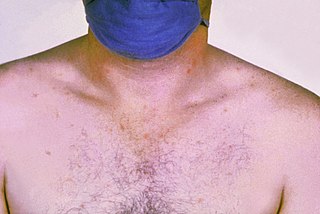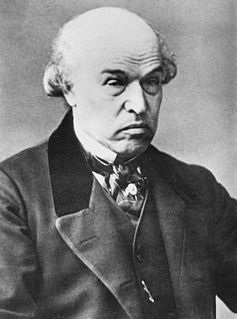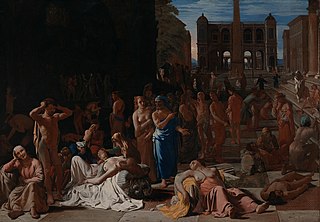 W
WTyphoid fever, also known simply as typhoid, is a bacterial infection due to a specific type of Salmonella that causes symptoms. Symptoms may vary from mild to severe, and usually begin 6 to 30 days after exposure. Often there is a gradual onset of a high fever over several days. This is commonly accompanied by weakness, abdominal pain, constipation, headaches, and mild vomiting. Some people develop a skin rash with rose colored spots. In severe cases, people may experience confusion. Without treatment, symptoms may last weeks or months. Diarrhea is uncommon. Other people may carry the bacterium without being affected, but they are still able to spread the disease to others. Typhoid fever is a type of enteric fever, along with paratyphoid fever.
 W
WKoffiefontein Mine is a diamond mine situated in the Free State province, about 80 km from Kimberley, South Africa. It is one of the many Kimberley mines of which Kimberley mine, de Beers mine, Dutoitspan, Bultfontein and Wesselton are its more famous neighbours.
 W
WContinuous fever is a type or pattern of fever in which temperature does not touch the baseline and remains above normal throughout the day. The variation between maximum and minimum temperature in 24 hours is less than 1°C (1.5°F). It usually occurs due to some infectious disease. Diagnosis of continuous fever is usually based on the clinical signs and symptoms but some biological tests, chest X-ray and CT scan are also used. Typhoid fever is an example of continuous fever and it shows a characteristic step-ladder pattern, a step-wise increase in temperature with a high plateau.
 W
WThe Croydon typhoid outbreak of 1937, also known as the Croydon epidemic of typhoid fever, was an outbreak of typhoid fever in Croydon, Surrey, now part of London, in 1937. It resulted in 341 cases of typhoid, and it caused considerable local discontent leading to a media campaign and a public inquiry.
 W
WKarl Joseph Eberth was a German pathologist and bacteriologist who was a native of Würzburg.
 W
WIn 2000, typhoid fever caused an estimated 21.7 million illnesses and 217,000 deaths. It occurs most often in children and young adults between 5 and 19 years old. In 2013, it resulted in about 161,000 deaths – down from 181,000 in 1990. Infants, children, and adolescents in south-central and Southeast Asia experience the greatest burden of illness. Outbreaks of typhoid fever are also frequently reported from sub-Saharan Africa and countries in Southeast Asia. In the United States, about 400 cases occur each year, and 75% of these are acquired while traveling internationally.
 W
WSir William Jenner, 1st Baronet, GCB, QHP, FRCP, FRS was a significant English physician primarily known for having discovered the distinction between typhus and typhoid.
 W
WMary Mallon, also known as Typhoid Mary, was an Irish-born cook believed to have infected 53 people with typhoid fever, three of whom died, and the first person in the United States identified as an asymptomatic carrier of the disease. Because she persisted in working as a cook, by which she exposed others to the disease, she was twice forcibly quarantined by authorities, and died after a total of nearly three decades in isolation.
 W
WParatyphoid fever, also known simply as paratyphoid, is a bacterial infection caused by one of the three types of Salmonella enterica. Symptoms usually begin 6–30 days after exposure and are the same as those of typhoid fever. Often, a gradual onset of a high fever occurs over several days. Weakness, loss of appetite, and headaches also commonly occur. Some people develop a skin rash with rose-colored spots. Without treatment, symptoms may last weeks or months. Other people may carry the bacteria without being affected; however, they are still able to spread the disease to others. Typhoid and paratyphoid are of similar severity. Paratyphoid and typhoid fever are types of enteric fever.
 W
WThe Plague of Athens was an epidemic that devastated the city-state of Athens in ancient Greece during the second year of the Peloponnesian War when an Athenian victory still seemed within reach. The plague killed an estimated 75,000 to 100,000 people, around one quarter of the population, and is believed to have entered Athens through Piraeus, the city's port and sole source of food and supplies. Much of the eastern Mediterranean also saw an outbreak of the disease, albeit with less impact.
 W
WSalmonella enterica is a rod-shaped, flagellate, facultative anaerobic, Gram-negative bacterium and a species of the genus Salmonella. A number of its serovars are serious human pathogens.
 W
WSalmonella enterica subsp. enterica is a subspecies of Salmonella enterica, the rod-shaped, flagellated, aerobic, Gram-negative bacterium. Many of the pathogenic serovars of the S. enterica species are in this subspecies, including that responsible for typhoid.
 W
WSalmonella enterica subsp. enterica is a subspecies of Salmonella enterica, the rod-shaped, flagellated, aerobic, Gram-negative bacterium. Many of the pathogenic serovars of the S. enterica species are in this subspecies, including that responsible for typhoid.
 W
WTy21a is a live attenuated bacterial vaccine that protects against typhoid. First licensed in Europe in 1983 and in the United States in 1989, it is an orally administered, live-attenuated Ty2 strain of S. Typhi in which multiple genes, including the genes responsible for the production of Vi, have been mutated chemically so as to render it harmless but nevertheless immunogenic. It is one of the three typhoid vaccines currently recommended by the World Health Organization.
 W
WSir Almroth Edward Wright was a British bacteriologist and immunologist.